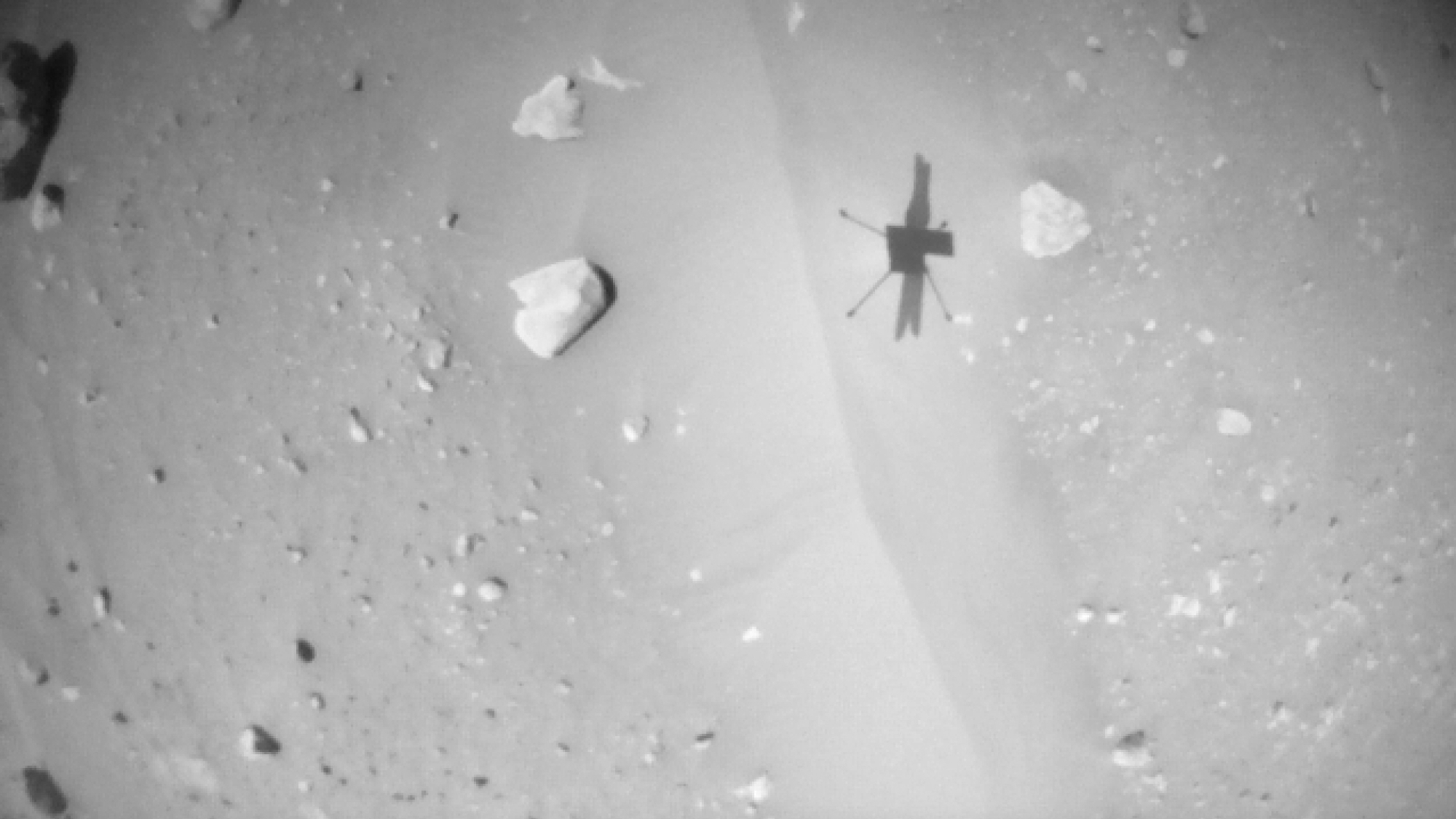
NASA's Ingenuity helicopter now has more than 100 minutes of Mars flight time under its belt.
The 4-pound (1.8 kilograms) Ingenuity flew for the 57th time on Sunday (Sept. 3), covering 713 feet (217 meters) of ground on a sortie that lasted 129 seconds.
That latter figure pushed Ingenuity's cumulative Mars air time over the century mark, to 102.4 minutes, according to the mission's flight log.
Related: Mars helicopter Ingenuity phones home, breaking 63-day silence
Ingenuity landed with NASA's Perseverance rover inside the 28-mile-wide (45 kilometers) Jezero Crater in February 2021. Perseverance is hunting for signs of ancient Mars life on the floor of Jezero, which harbored a big lake and a river delta billions of years ago, and collecting dozens of samples for future return to Earth.
Ingenuity was originally tasked with showing that aerial exploration is possible on Mars, despite the planet's thin atmosphere. The little chopper aced this mission after a month-long, five-flight campaign. NASA then granted an extension, during which Ingenuity is serving as a scout for the Perseverance team.
Ingenuity's success will also pave the way for future Mars helicopters, if all goes according to plan.
Get the Space.com Newsletter
Breaking space news, the latest updates on rocket launches, skywatching events and more!
For example, NASA plans to put two Ingenuity-like choppers on the lander mission that will retrieve Perseverance's collected samples. And the agency is working on larger, more capable helicopters that could do bona fide Mars exploration on their own, collecting data in hard-to-reach places and covering large swaths of Red Planet ground.
Join our Space Forums to keep talking space on the latest missions, night sky and more! And if you have a news tip, correction or comment, let us know at: community@space.com.

Michael Wall is a Senior Space Writer with Space.com and joined the team in 2010. He primarily covers exoplanets, spaceflight and military space, but has been known to dabble in the space art beat. His book about the search for alien life, "Out There," was published on Nov. 13, 2018. Before becoming a science writer, Michael worked as a herpetologist and wildlife biologist. He has a Ph.D. in evolutionary biology from the University of Sydney, Australia, a bachelor's degree from the University of Arizona, and a graduate certificate in science writing from the University of California, Santa Cruz. To find out what his latest project is, you can follow Michael on Twitter.









